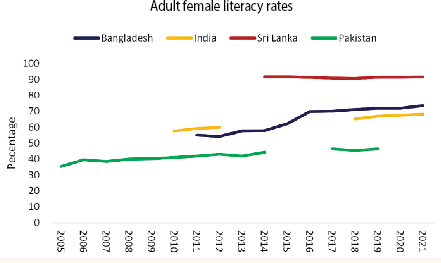GHANDHARA Nissan Limited identifies its principal activities as the assembling and progressive manufacturing of Nissan passenger cars, Japanese UD trucks and buses, and the import and marketing of other Nissan vehicles under a contract agreement.
In the summer of 2013, the company — an associate of the Bibojee Services (Pvt.) Limited, which holds 62pc shares — set up a wholly-owned subsidiary, Ghandhara DF (Pvt.) Limited. The subsidiary company will assemble and ‘progressively manufacture’ and sell Dongfeng commercial vehicles under a toll assembly agreement with Ghandhara Nissan Ltd (GNL).
“During the quarter ending March 31, the parent company invested Rs40m in the equity of Ghandhara DF (Pvt.) Ltd (GDFPL). As a result, the parent company’s total investment in the subsidiary stood at Rs99.99m at March 31,” Muhammad Usman, Ghandhara Nissan’s general manager finance, told Dawn.
In the company’s annual report for the year ending June 30, 2014, its chairman, Raza Kuli Khan Khattak, had informed shareholders that the Dongfeng’s CKD operations had commenced.
During the year, 52 completely built-up (CBU) Dongfeng units, imported from China, were sold in commercial markets. The chairman affirmed that the market’s response has been encouraging.
“The price differential of Dongfeng vehicles as compared to Japanese models will enable them to acquire a significant share in the market for heavy commercial vehicles (HCVs) and light commercial vehicles.”
Ghandhara Nissan imports almost 80pc of its inputs from Japan, which is why the fall in the yen’s value against the rupee had a major impact on its production costs
For the nine months ending March 31 (9MFY15), the GNL recorded a standalone after-tax profit of Rs281m, up sizably from Rs95m in the same period last year. The company’s directors attributed this to higher sales volumes and a favourable exchange rate. Turnover for the period rose to Rs3.72bn from Rs1.81bn. It sold 600 UD trucks, against 378 units in the same period last year.
Ghandhara Nissan imports almost 80pc of its inputs from Japan, which is why the fall in the yen’s value against the rupee had a major impact on its production costs. Automobile analysts believe that the drop in international commodity prices and the depreciating yen had lowered the company’s costs in FY14, leading to higher margins.
Moreover, the slump in oil prices by over 40pc during the year, as well as the cumulative cut in the discount rate from 10pc to 7pc in FY15, have both benefitted the demand for the company’s products reportedly due to an increase in the purchasing power of industrial consumers.
The company’s management as well as market watchers see the rollout of the Dongfeng vehicles as a major break-through. Arif Habib Limited analysts stated in a May 6 report that the Pak-China Economic Corridor is expected to increase trade activities between the two countries, which will also benefit the company’s sales.
“It is expected that 4,000 HCVs will travel through the proposed road link and create substantial demand for trucks,” an analyst said. He believed that GNL is well-placed to capitalise on this development going forward.
Nonetheless, the company’s management intends to give priority to the assembly and selling of UD trucks over the next few years. According to Sherman Securities analysts, the company’s management had explained last October that Nissan trucks (UD) were assembled as well as sold by GNL. It also assembles units of Land Rover and Isuzu on a contract basis.
For the year ending June 30, 2014, the company posted a profit-after-tax of Rs174m, representing earnings-per-share of Rs3.86. This was up significantly from the prior year’s earnings of Rs10m and eps of Re0.23.
Yet, the plant’s capacity has remained greatly underutilised. The management has blamed this on ‘low demand on account of economic slowdown’. Against the annual production capacity of 6,000 vehicles on a single-shift basis, the company assembled 803 Land Rovers and processed 1,115 truck cabs through its paint shop. And against the production capacity of 2,500 trucks and buses, the company produced 1,246 UD and Isuzu trucks and buses in the year.
An automobile sector analyst cited multiple reasons for the company’s improved finance performance. These included a volumetric rise in UD truck sales, decline in international commodity prices, and an 8.1pc depreciation of the Japanese yen against the rupee.
“Besides, a boost in the transportation business due to infrastructure development and positive macros translated into increased demand for GNL trucks,” the analyst said.
Ghandhara Nissan’s assets stood at Rs3.82bn by end-March 31. The company’s paid-up capital stands at Rs450m, and it holds Rs549m in ‘unappropriated profit’. It has a 30pc free float.
By last June, around 2,530 local investors held 18.4pc of GNL’s shares. At the close of trading last Thursday, the company’s stock was tagged at Rs93.48 a share, up from Rs34.35 on the same date last year. Arif Habib Limited analysts believe that given the volumetric growth in UD truck sales and improving domestic economic indicators, GNL is likely to witness sustained revenue growth going forward.
Meanwhile, some sector watchers are hoping that the relatively newly launched Dongfeng vehicles would be able to carve out a big share in the market for trucks as demand for HCVs rise in the wake of the materialisation of the Pak-China Economic Corridor projects.
Published in Dawn, Economic & Business, June 1st, 2015
On a mobile phone? Get the Dawn Mobile App: Apple Store | Google Play


































